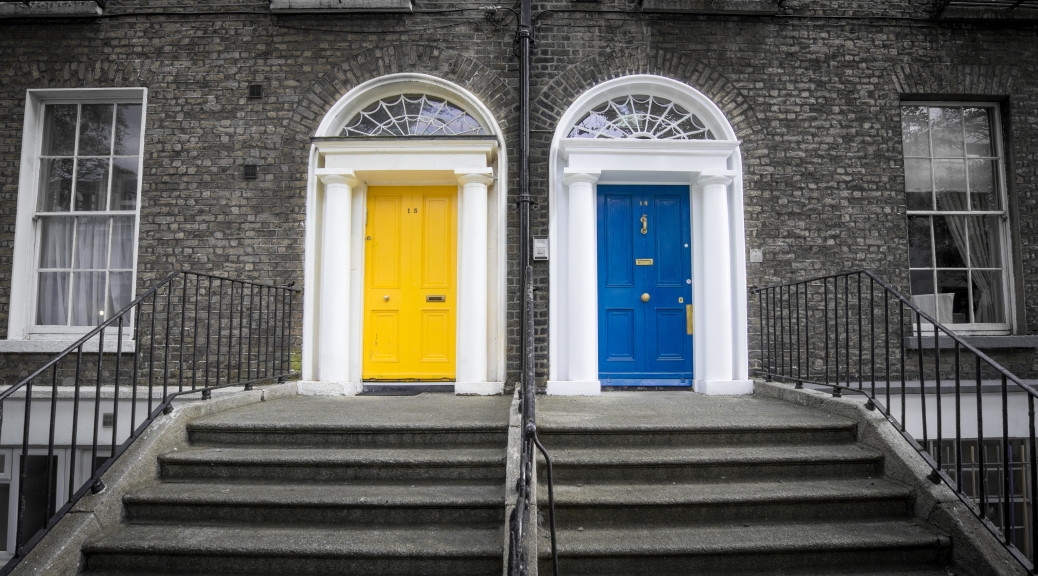Andy Brainin, director at South Hill Capital, comments on the latest housing announcement and whether Dublin needs to think more carefully about its modern-day housing plans.
The 2018 budget announcement made the Irish Government’s position on housing clear; they are working to get the market moving and in every way needed. Bold steps are being taken to provide developers with viable opportunities to build more homes, reallocating €750m to the newly-birthed Home Building Finance Ireland (HBFI) fund. The aim of the new Government body is to provide debt funding to commercially viable residential development projects. This comes at the same time as plans which will see the vacant site levy more than double to 7%, clearly designed to stop useful land going to waste.
While there was, and still is, much contention over the adjustments being made to stamp duty land tax; on the most part, the property industry has largely been indifferent to the recently announced changes. Many believe that the fiscal proceeds may be used to give developers the support they need to begin tackling the housing shortage, while others are conscious of the potential deterrent that an increase in SDLT may cause to international investors. Ongoing transactions are likely to complete, but potential investors may now think twice about whether Dublin is the right place for their business. While both arguments have their merit, there is a more important discussion to be had around whether the 2018 budget has gone far enough, or been creative enough, in addressing how the growing stock of new-build projects can be effectively integrated into the historic fabric of the city.
For a capital with such a rich cultural and historical heritage, why is no one stopping to consider the impact of the city’s continued growth on existing spaces? It seems clear that with ‘hard growth’, there will be a forced evolution of the property landscape in Dublin. Triggered by changing demands, existing buildings and land will soon evolve into repurposed office and residential spaces. Change in this regard is necessary as building practices improve and tenants place emphasis on new aspects of property design. Modern buildings will inevitable carry the DNA of the occupants as they opt for purpose built infrastructure. Bloomberg’s new European headquarters for instance, introduces a plethora of functional proptech integrations. Features such as natural ventilation are powered by cutting edge tech; the building uses sensors to power bronze blades, which open and close automatically, allowing the building to ‘breath’ in reaction to changing weather conditions.
These systems aren’t easily integrated into older buildings, although this doesn’t make existing structures exempt from developing proptech infrastructure. Historic buildings should form an integral part of any urban regeneration and Dublin is no exception, especially when we consider the cultural and historic value that could be lost. Research has shown the importance of historical spaces in enriching communities and drawing people to central areas. Well-tended landmark features like historic buildings can be a catalyst for the rejuvenation of neighbourhoods. Government and developers need to carefully consider how they will create synergy between modern, purpose-built structures and existing, historic ones to create a seamless divide between the old and the new. It would be a real shame to look back in 30 years and feel that Dublin had lost its identity in the midst of a gold rush.
Current developer trends in Dublin seem rushed, a fast reaction to the opportunity to make a quick buck. Opportunities to tear away existing structures in efforts to free-up land, ready for new-build office space, are creating a cultural vacuum. A balance must be struck in this regard. Future developments should look to complement existing spaces, rather than outshine them. So, when Google fund the integration of lightning fast broadband, this improved infrastructure should benefit all surrounding buildings.
New buildings have the potential to breathe life into areas, but they cannot attempt to replicate communities which have evolved over decades. The desire to redevelop older buildings in central business districts such as Dublin 1,2 and 4 has remained high but this may be largely due to the limited nature of space in these areas. Large sections of Dublin could begin to suffer from an identity crisis as the existing landscape is stripped away in droves.
Properly utilised, heritage buildings are able to positively impact structural economic change. As money is spent on new buildings with cutting edge technology, integrated into every square inch of their design, the industry must fact-check its grandiose ideas. There are many more existing buildings than there are new-build projects and so proptech initiatives must look to enhance the sustainability of current stock, rather than neglecting it.

